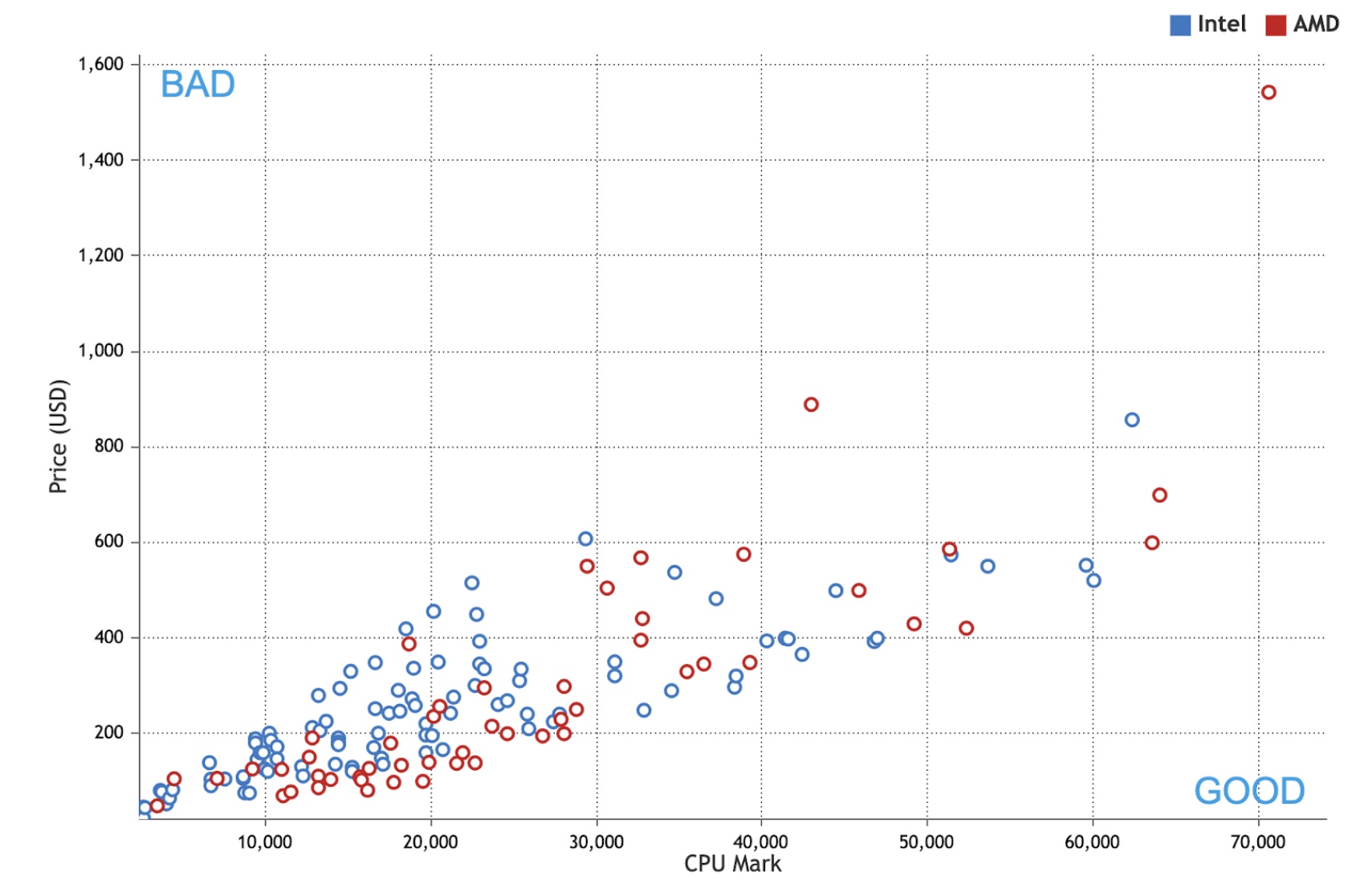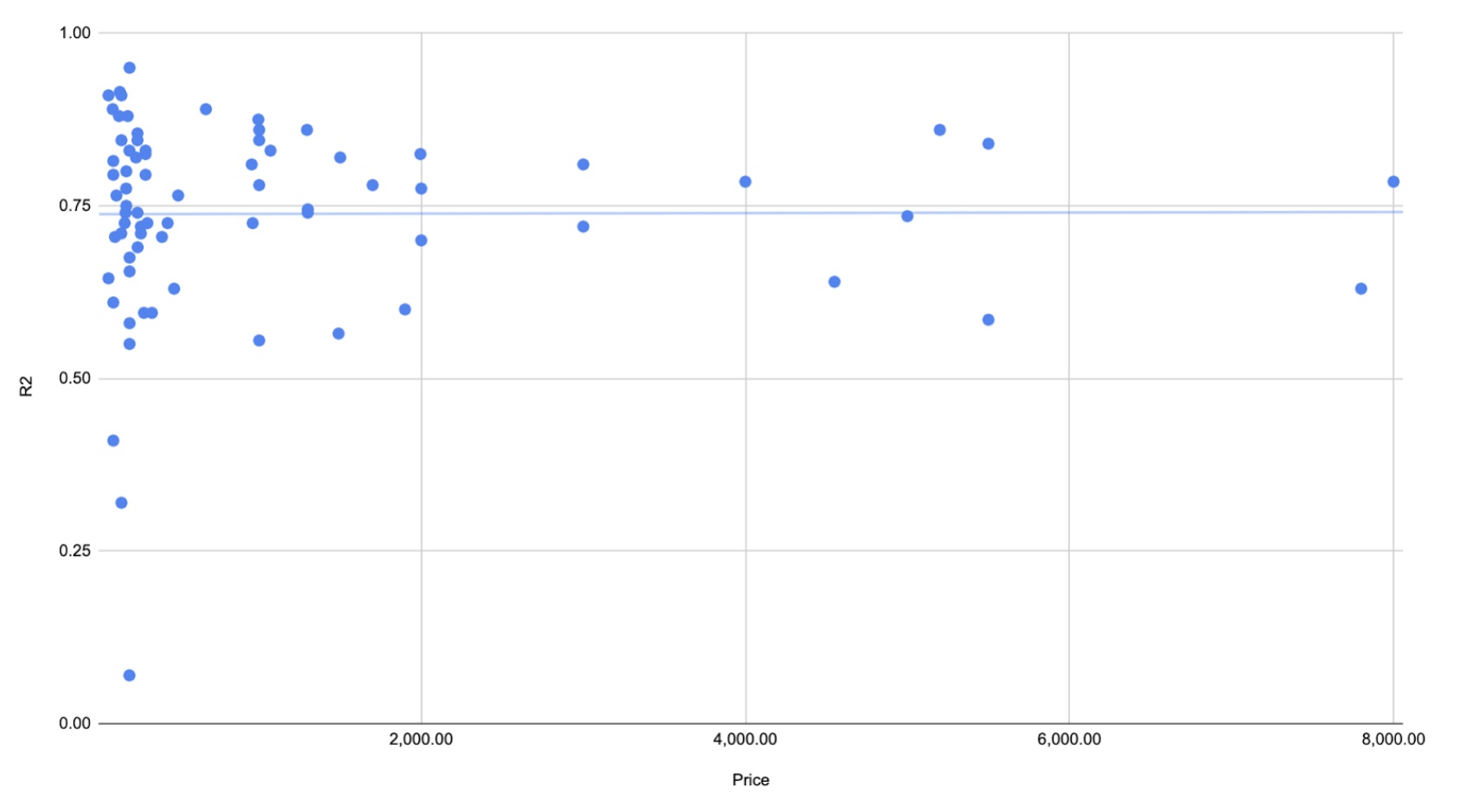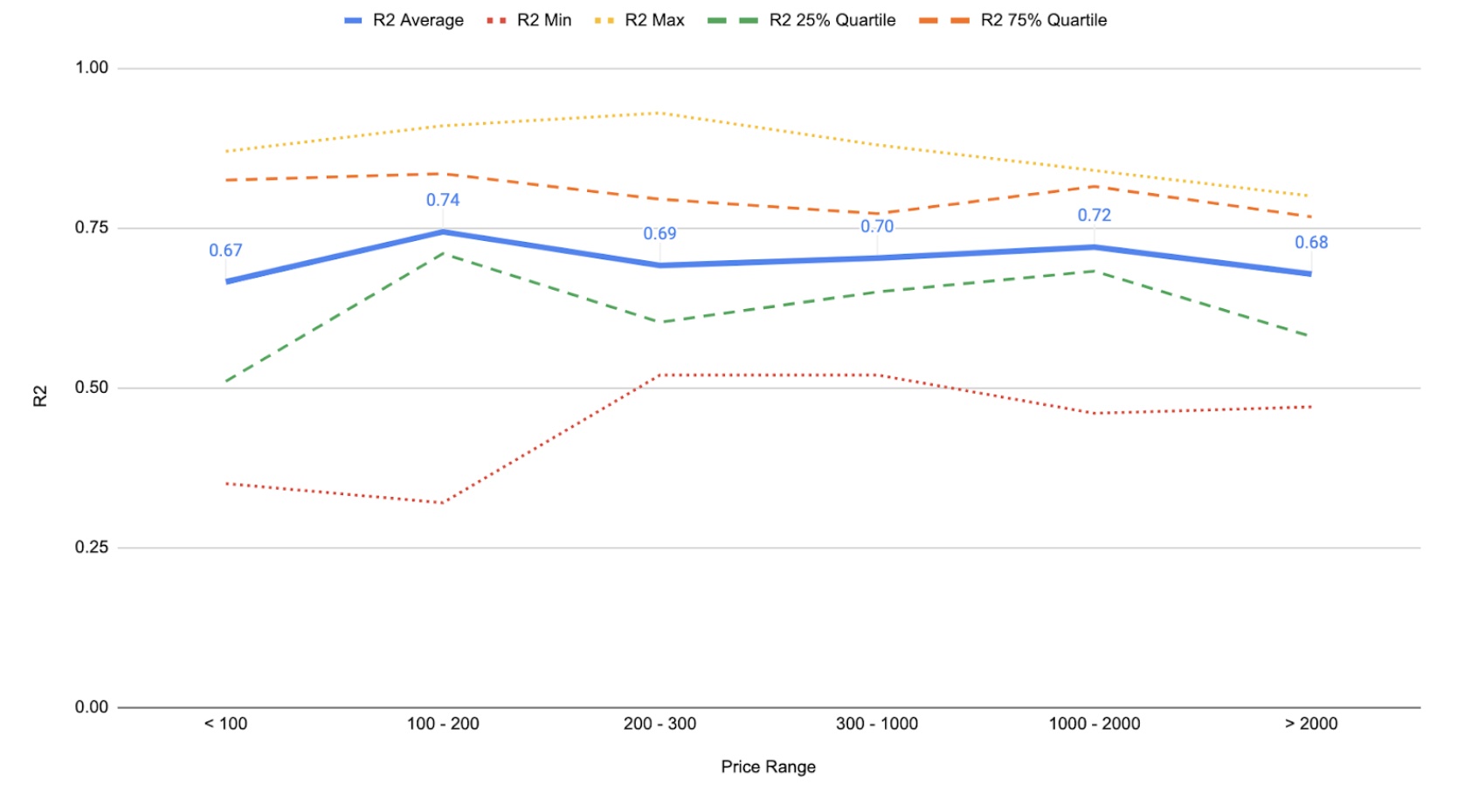Open and Accurate Air Quality Monitors
We design professional, accurate and long-lasting air quality monitors that are open-source and open-hardware so that you have full control on how you want to use the monitor.
Learn MoreTypically, a higher product price should correlate with better quality, features and/or performance. Take for example computer CPUs: The higher the cost of the CPU, the better the performance. The graph below chart illustrates that very well:

When it comes to air quality monitors, we need to first decide what is the most important performance criterion? Is it the design? Is it the size? Is it the connectivity?
These might all be important factors but the key performance criterion is the accuracy of the monitor. If a monitor does not deliver accurate measurements, even the best design is of no use. So let’s have a look at the correlation between air quality monitor prices and accuracy. For this analysis, we only look at the accuracy of PM2.5 as this is one of the most common air quality parameters and, thus, one that most monitors measure.
South Coast AQMD, does independent tests of air quality monitors and most of the well-known monitors went through this testing. So this is an excellent data source that we can use for our analysis. I downloaded the data as of April 12, 2023 and looked at the correlation between price and accuracy. As an indicator for the accuracy, the agreement between the sensors and a standard reference instrument was determined. To quantify this agreement, South Coast AQMD determined the R2 value which measures the linear relationship between the sensor and their reference instrument. An R2 approaching the value of 1 reflects a near perfect correlation, whereas a value of 0 indicates a complete lack of correlation.
When we plot the accuracy (R2) against the price of all the monitors tested, we can see the following:

It looks quite different from the charts about CPU performance, doesn’t it? The price does not seem to affect the accuracy of the monitor which can also be seen by the flat trend line.
In the next figure, I separated the monitors into different price ranges and show the average, minimum, maximum as well as 25% and 75% quartile of R2. Here we can see that monitors in the price range of USD 100 - 200 seem to offer the best accuracy and that the most expensive monitors accuracy is pretty much the same as of the cheapest monitors.

So, a monitor that costs USD 2000 delivers the same accuracy as a monitor for USD 200 (for PM2.5 measurements).
Since we only focus on the accuracy of PM2.5 and put the complete price of the monitor in relation, we could miss some important aspects like:
Above could partially explain the reason for the higher price, however we should at least expect the same or better accuracy for PM2.5 which is paradoxically not the case.
What is your experience with the accuracy of air quality monitors? We are curious, drop us a line!
By the way, we are currently doing co-location testing of our new open-hardware outdoor monitor Open Air and first tests indicate an R2 of 0.8 - 0.9. We will publish detailed test results in the coming weeks.
Curious about upcoming webinars, company updates, and the latest air quality trends? Sign up for our weekly newsletter and get the inside scoop delivered straight to your inbox.
Join our Newsletter
We design professional, accurate and long-lasting air quality monitors that are open-source and open-hardware so that you have full control on how you want to use the monitor.
Learn More